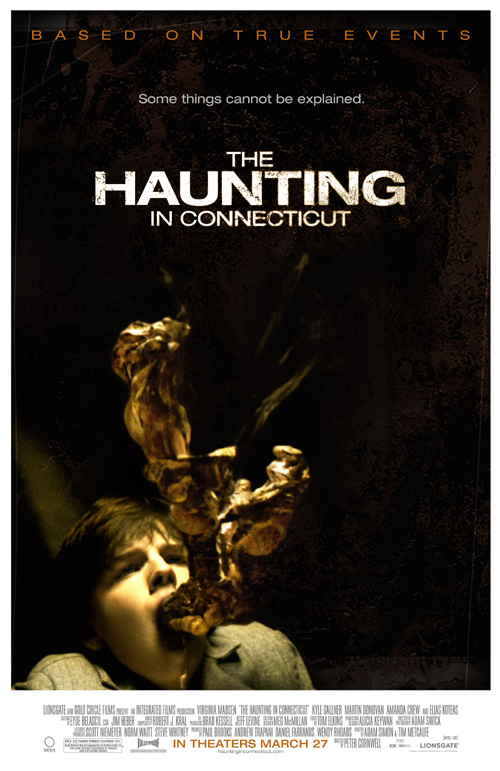Movie: “The Haunting in Connecticut”
Director: Peter Cornwell
Stars: *1/2 (out of five)
The opening shot reveals that “The Haunting in Connecticut” is “based on a true story.” Whether it’s based on a true story or not, consider the possible reasons the filmmakers would consider it necessary to reveal this bit of information. Most movies that are “based on true stories” tend to be motivational or historical, and sometimes both. This movie has neither intention. By basing a horror film on true events, it should, in theory, be scarier than a ridiculous fiction. Why watch a fictional evil event when you can watch a real evil event that actually happened in Connecticut?
But why would you need a movie that pulls the “based on true events” card to prove that evil actually exists in the world? Just pick up any newspaper and read the headlines about Josef Fritzl. In “No Country for Old Men” Sheriff Bell observed there are some things so evil that reach newspaper headlines that you couldn’t make them up even if you tried. “The Haunting in Connecticut” feels phony, and therefore fails at taking the existence of evil in the world seriously.
Virginia Madsen stars as Sarah Campbell, a distraught mother who moves her family into the haunted house in Connecticut after her eldest son is diagnosed with cancer. The family moves to the house for the sake of the son, because the house is closer to the hospital. Soon, the family members start seeing visions of the dead and are mentally attacked by ghosts in the house.
Every character seems to be in service of the Idiot Plot ; if they moved into this house for the well-being of the child, then why not simply leave at the first sign of trouble? They go through an awful lot of emotional trauma to stay in this house, and don’t tell me they had trouble getting rid of the house; the “true events” occurred far before the housing market went into the pit.
But trying to follow the logic of a horror movie is like trying to read Shakespeare using Morse code. It’s pointless. The main reasons to recommend a horror flick depend on its scariness. “The Haunting in Connecticut” is not scary. Shocks and thrills only work when we least expect them. The scares in this film all follow a specific pattern; a character will be alone in the room and then suddenly … someone’s there with them. It reuses this same card without shuffling.
What else can be said in the film’s defense? That it holds to a Christian belief that a supernatural evil exists because there’s a priest in the film who helps fight the evil spirits? Note that he doesn’t do it with the Word of God or by invoking the name of Jesus. He uses magnets. I don’t seem to remember hearing any theological sermon about warding off Satan’s minions by being magnetized, but I’ll keep that in mind the next time I misplace my Armor of God pajamas.







